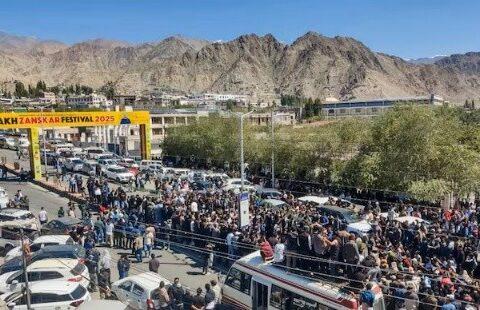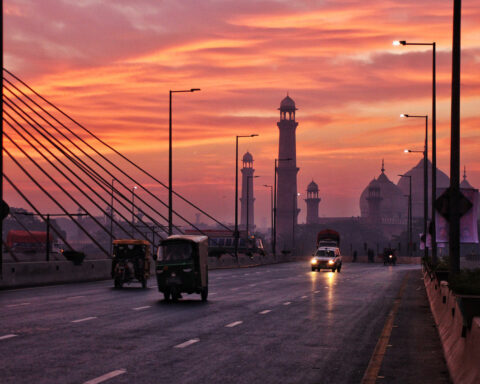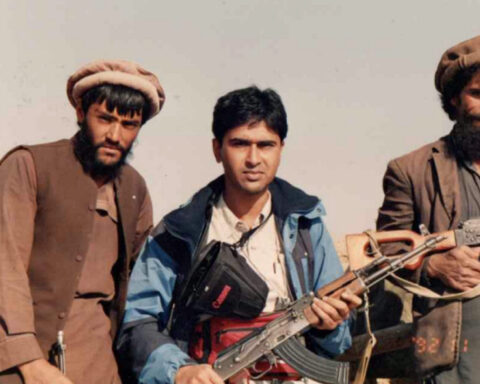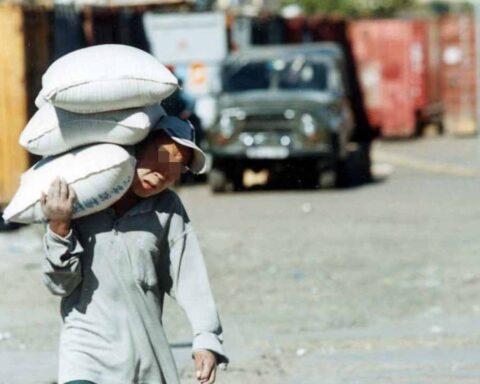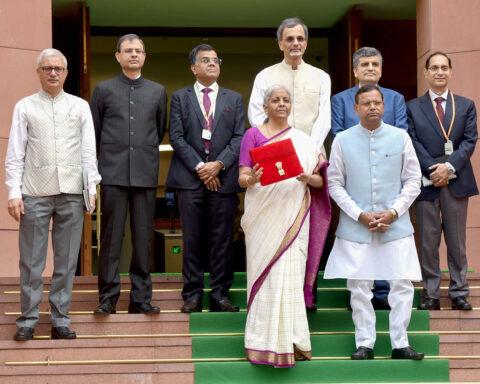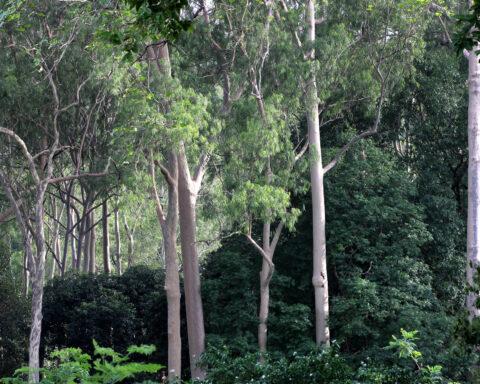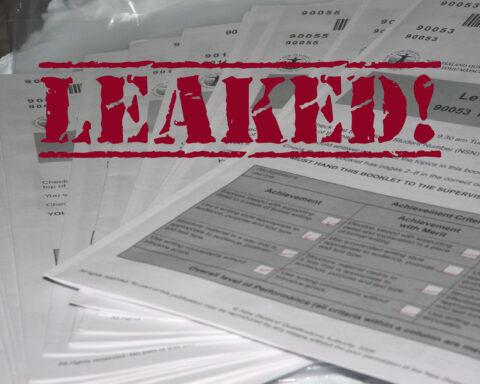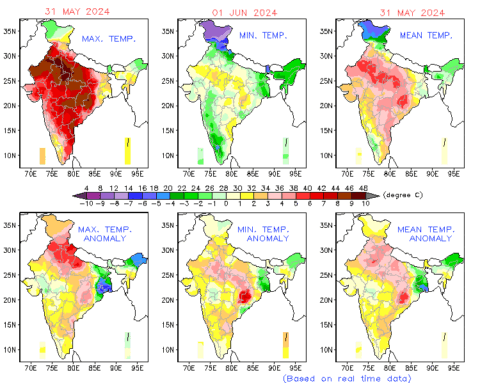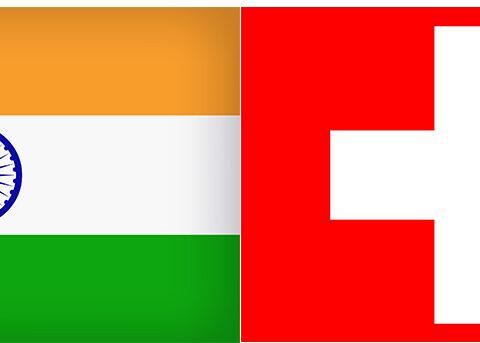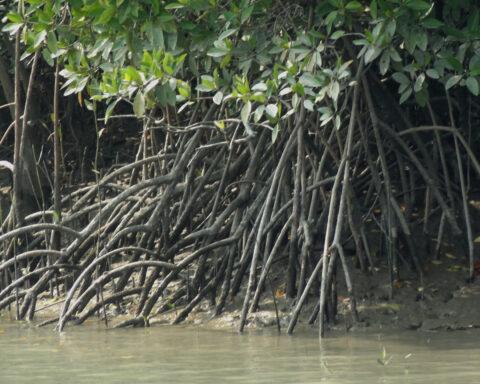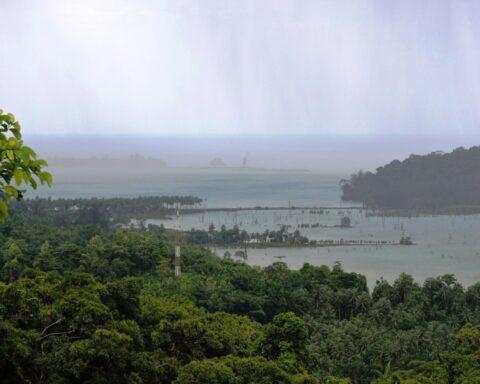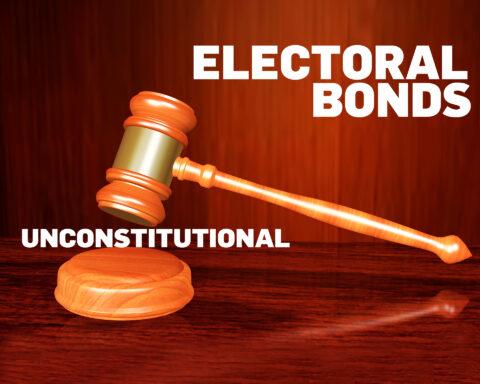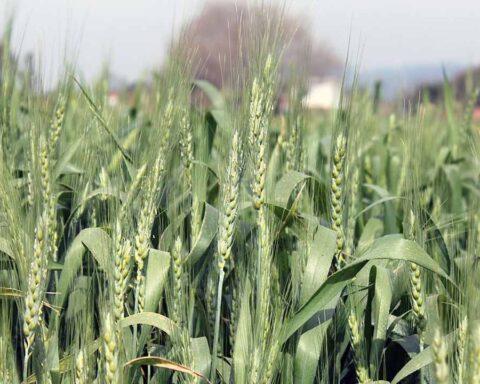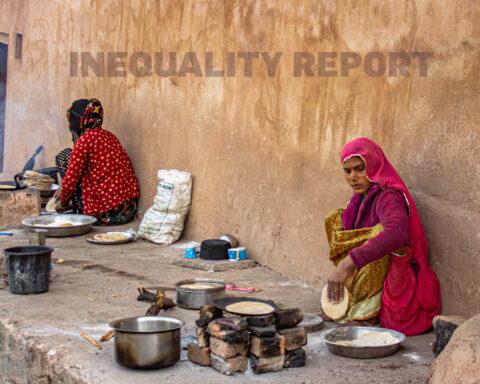Nepal is no longer just a peaceful Himalayan nation—it has become a key battleground in the growing rivalry between the United States and China in South Asia. Recent political upheaval, including the resignation of Prime Minister K.P. Sharma Oli after mass youth-led protests, has exposed Kathmandu to external pressures, signalling that domestic politics are increasingly intertwined with global strategic interests. The deployment of the Nepal Army to control violent protests shows that the situation was beyond the control of government and its law and order machinery.
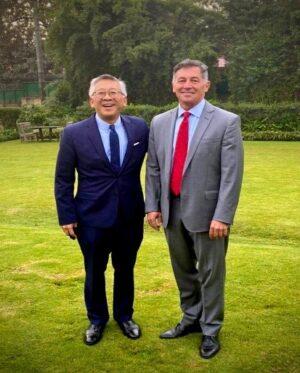
On December 8, 2024, U.S. Assistant Secretary of State for South and Central Asian Affairs, Donald Lu, ” known for his role in destabilising governments, visited Kathmandu to meet the U.S. ambassador Dean R. Thompson—a move widely seen as part of Washington’s engagement in Nepal. Meanwhile,
Further, China’s grip on Nepal is no longer an inference but a fact of geopolitical gravity. China’s influence is visible across infrastructure projects, trade corridors, and political networks, demonstrating Kathmandu’s growing role in the Beijing-Washington contest for the region.
South Asia: The U.S.–China Chessboard
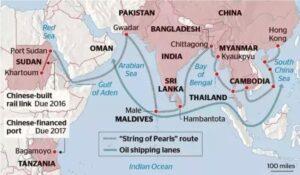
Since 2000, US analysts have long used the term “String of Pearls” to describe a strategic web spun by the People’s Republic of China across the Indian Ocean. According to this hypothesis, China is building up a string of commercial ports, bases and maritime partnerships—stretching from its mainland, through the Strait of Malacca, across Pakistan’s Gwadar Port to Sri Lanka’s Hambantota, Bangladesh’s Chittagong, even to the Horn of Africa—to secure sea-lines of communication and encircle its rival, India.
India views this expansion as a strategic threat, while China insists its projects are purely commercial.
Bangladesh
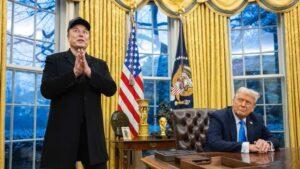
The U.S., in turn, has used development aid and foreign assistance to influence political outcomes in the region, the idea is well-documented. According to posts from DOGE’s official channel, the US$ 29 million grant aimed at “strengthening the political landscape in Bangladesh”, was one of dozens of overseas programmes axed in the name of fiscal prudence. The list also included a US$ 21 million project to boost voter turnout in India and a US$ 20 million cut labelled for “fiscal federalism” and conservation in Nepal.
President Trump went further, accusing the US-funded Bangladesh project of being shrouded in opacity—claiming the money had been awarded to “a firm that nobody ever heard of, with just two people working,” and using it as an example of misused taxpayer funds.
Meanwhile in Bangladesh, some analysts see the interim government as pro-U.S., partly because of the role of figures like Muhammad Yunus, founder of Grameen Bank, who has strong ties to U.S. organizations such as USAID and the Ford Foundation. Some view Yunus’s prominence as alignment with U.S. interests; the Ford Foundation is already under scrutiny by Indian investigative agencies for alleged anti-India activity.
In the heart of the Bay of Bengal, an ostensibly mundane question – control of a small coral isle – has become emblematic of far larger power-games unfolding in South Asia. The isle in question is St Martin’s Island, a speck of land just off Bangladesh’s southern coast. And the claim is now being made by former Prime Minister Sheikh Hasina: that her ouster traces back, in large part, to her refusal to allow a U.S. military base there.
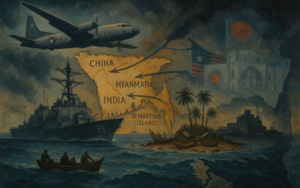
Bangladesh’s strategic geography makes it a key site for both U.S. and Chinese interests. St Martin’s Island lies near a maritime corridor of enormous strategic importance: the Indo-Pacific sea-lanes including the Malacca Strait. A military foothold there would offer a power-seeking actor influence over naval traffic, energy flows and regional alignment. For China, any U.S. base in the Bay of Bengal is a direct challenge to its maritime supply lines; for India, it is both an opportunity and a risk — a U.S. presence near India’s eastern flank could alter the dynamics of New Delhi’s maritime primacy. The US had been pushing Bangladesh to offer St Martin’s Island for its military base. Washington is seen as aiming to control the Bay of Bengal to underpin.
India and counter China by controlling the Malacca Strait, though which three-fourths of the global maritime shipping trade passes. Former PM Hasina had flatly refused to do so, going by the US record of fleecing vassal states through military bases.

Notably, US military presence in Bangladesh is on the rise. A team of four U.S. Army Pacific officers led by Lt. Gen. Joel “JB” Vowell visited Dhaka in late March 2025 for discussions with senior Bangladesh Army officers — part of what observers describe as American efforts to establish a supply-base near Bangladesh’s border with Myanmar ahead of potential operations in Rakhine State. Recently, 100 US troops arrived in Bangladesh on a C-130 aircraft. This is part of the American efforts to establish a supply base in Bangladesh close to the border with Myanmar, to be able to assist the Arakan Army in its fight against the military junta in Myanmar (Northeast News, 15 April 2025). This too, serves to enhance US presence in the region. Former Prime Minister Sheikh Hasina claimed her refusal to allow a U.S. military base on St. Martin’s Island contributed to her ouster—though the U.S. denies this.
While the deeper workings of Washington’s “deep-state” are speculative, the intertwining of strategic territory, aid flows and political upheaval in Dhaka cannot be dismissed as mere coincidence.
In parallel, Chinese corporations now visibly dominate Bangladesh’s megaprojects — from the rail link spanning the Padma River and major coal-fired power plants to national highways and expansive special-economic zones. But this is far more than foreign investment. It is strategic leverage.
During Xi Jinping’s 2016 visit to Dhaka, Bangladesh joined the Belt and Road Initiative and signed roughly US$ 20 billion in infrastructure deals. Since then, Beijing has pledged about USD 40 billion in assistance — yet only around US$ 4.45 billion has been disbursed for 35 projects.
Commerce between Beijing and Dhaka is likewise heavily skewed: while imports from China exceed US$ 16-23 billion in recent years. According to official data, Bangladesh’s exports to China were only about US$ 677 million in the fiscal year 2022–23. At the same time, import figures from China reportedly exceeded US$ 22 billion, This is not a partnership of equals: it is dependency cloaked in the language of strategic cooperation.
On the ground, Chinese firms are estimated to support roughly 550,000 jobs in Bangladesh, and a 783-acre special economic zone in Anwara (Chittagong) is earmarked for Chinese investment, under a 2016 memorandum of understanding.
These figures hint at a deeper story: the promise of scale contrasted with the modest footprint of execution. For Bangladesh, the implication is that dependency is being built even when full investment is not. For China, it means influence is secured not simply through funding but via the optics and potential of large-scale commitment. Perhaps the starkest indicator is debt. Bangladesh’s loans from China are estimated at over USD 5.57 billion according to the country’s Economic Relations Division. Dhaka is again negotiating a fresh USD 5 billion soft-loan from Beijing to shore up dwindling foreign-exchange reserves. Unlike multilateral lenders, many of these Chinese loans carry repayment terms of 10-15 years rather than 25 — a shorter leash, and arguably a firmer grasp.
Sri Lanka
Sri Lanka sits astride one of the world’s busiest maritime routes in the Indian Ocean.
From state visits to big-ticket infrastructure, China and Sri Lanka reaffirmed a strategic cooperative partnership in January 2025. China now holds significant stakes in Sri Lanka’s key coastal projects — including the long-term lease of Hambantota Port and the Colombo Port City development. These investments raise concerns about sovereignty and long-term debt. Beijing’s role also extends beyond economics. Chinese weapons, training, and equipment have played an important part in modernising Sri Lanka’s military since the mid-2000s. However, this growing dependence comes with risks. Sri Lanka’s heavy borrowing from China has raised concerns about debt, sovereignty, and the country’s long-term ability to make independent strategic decisions.
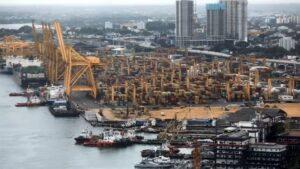
The U.S., recognising China’s strong foothold, has responded with its own projects, such as a US$ 553 million deep-water container terminal at Colombo, via U.S. International Development Finance Corporation (DFC). Positioning itself as an alternative to Chinese financing.
Further, the U.S. sees Sri Lanka as a key node in the Indian Ocean where influence can shift. By supporting infrastructure that doesn’t increase sovereign debt, the U.S. aims to provide a model of “sustainable” investment — countering China’s model of high-debt infrastructure. U.S. efforts in maritime and shipping infrastructure are part of a broader Indo-Pacific strategy, aiming to support Sri Lanka’s recovery (post-2022 economic crisis) while offering an alternative to Chinese loans. U.S. diplomatic interactions with China in Colombo (e.g., meetings between ambassadors) show that the U.S. is aware of and engaged in the Sri Lankan theatre, not just in reactive mode.
Sri Lanka is not simply choosing sides. Its engagements span China, the U.S., India and other partners. For example, Sri Lanka declared a moratorium on foreign research ships amid fears of Chinese maritime surveys — a sign of its delicate balancing between Indian and Chinese sensitivities.
Nepal
The rivalry in Kathmandu is intense. Both powers, the US & China, court Nepalese political leaders, demonstrating the intense rivalry in Kathmandu

China’s presence in Nepal is substantial. It has invested in infrastructure, energy, and security, including the National Armed Police Force Academy. Proposed projects, like the Shigatse-Kathmandu rail link, aim to connect Tibet with Nepal to boost trade, often aligning with Chinese interests. Two aspects of Chinese assistance to Nepal are notable. First, official figures state that total aid commitment by China stands at US$ 1.3 billion, but actual disbursement is only US$ 545 million. This is partly due to Kathmandu’s continued reluctance to take loans and grants from China, mindful of debt crises in Sri Lanka and Pakistan.
However, China is a major player in political and security assistance to Nepal. The National Armed Police Force Academy was built entirely with Chinese funds (Gulf Times, July 2017). Notably, former Chinese Ambassador in Kathmandu Hu Yangqi, was responsible for ensuring saving the government of K.P. Oli in 2020 (Hindustan Times, 7 July 2020). The Chinese Ambassador engaged in hectic discussions with leaders from all political parties to let Oli remain in office. The other issue is that, for its own benefits China is building connectivity from Tibet to Nepal, using both rail and road; the objective being to larger trade to and from Nepal. Proposed rail links, like the Shigatse-Kathmandu rail link, are examples of such initiatives, meant to serve Chinese interests.
Notably, Balendra Shah, the Mayor of Kathmandu, and a Gen Z leader, was first courted by the Chinese and he was in regular touch with the Chinese Ambassador, Hu Yangqi, but in 2023 he also met the US Ambassador Dean Thompson. The Nepalese have never fully embraced China’s financing, and their caution is far from misplaced. Thus, the Chinese also have a motive in a possible regime change in Nepal.
The US has a greater interest in seeing the back of Oli with a possible coup initiative, the twin objectives of keeping the Chinese at bay and pushing India under pressure. The U.S., meanwhile, decided to continue funding (Kathmandu Post, 18 September 2025) for the Millennium Challenge Compact in Nepal, despite the cutting of aid to the USAID. This signals the Trump administration’s intention to keep Kathmandu under watch.
Conclusion
Nepal, once seen as a neutral buffer state, is now a frontline of great-power competition. India faces a new challenge as Kathmandu emerges as a pivot in the U.S.-China contest. If Washington and New Delhi fail to respect Nepal’s sovereignty and respond to China’s growing influence, Kathmandu could become a key axis in a reshaped Himalayan and South Asian order.
Delhi, long accustomed to treating Kathmandu as part of its strategic hinterland, now contends with a front-row seat in a replay of the Great Game, albeit in a modern guise.




